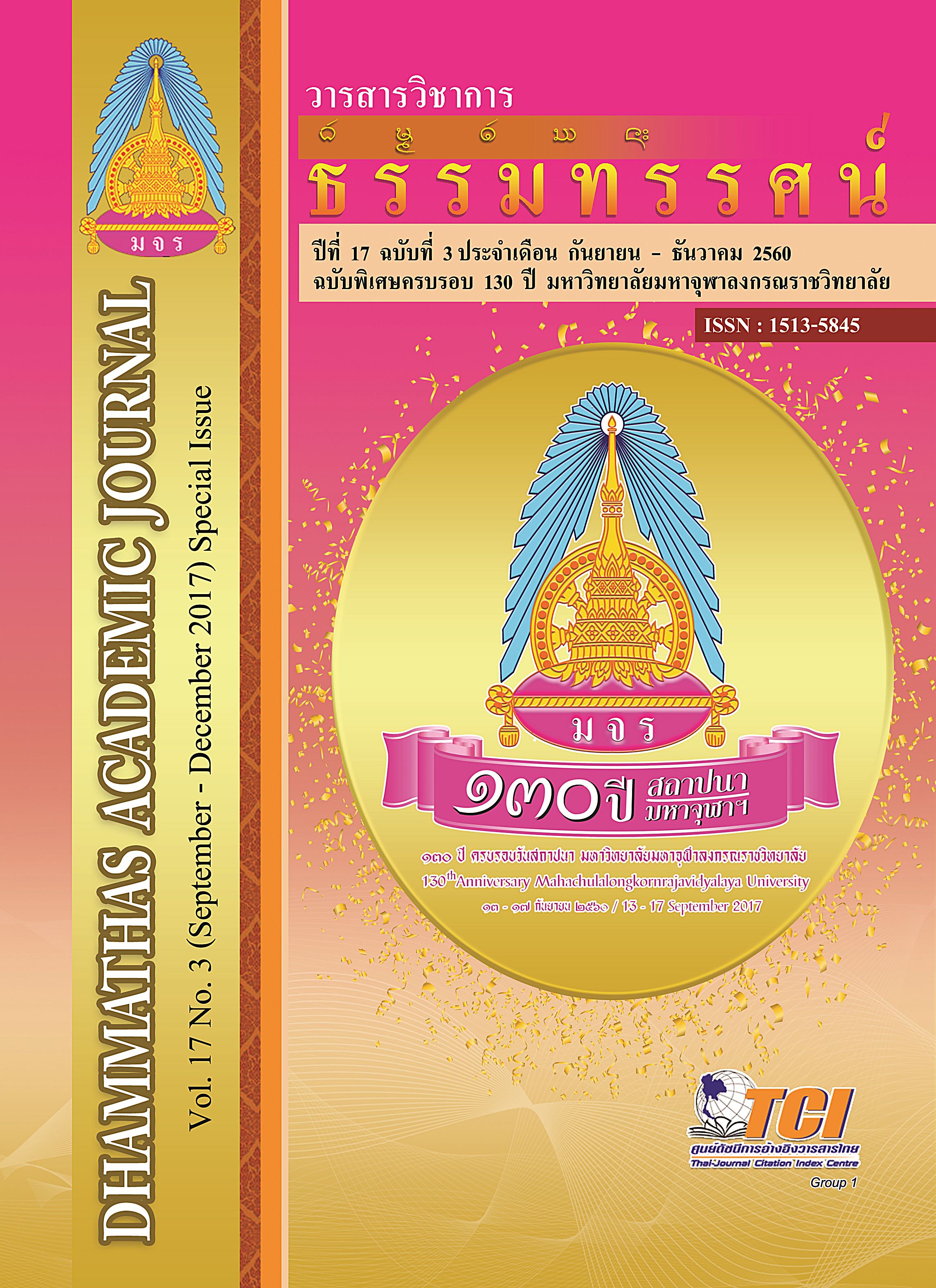The Model of Supervision for Measurement and Assessment of Learning Through Buddhist Doctrince for Schools under the Secondary Educational Service Area Office 26
Main Article Content
Abstract
The purpose of the research were 1) to study the problems of supervision for measurement and assessment of learning in schools under the secondary educational service area office 26, 2) to study the processes of supervision for measurement and The purpose of the research were 1) to study the problems of supervision for measurement and assessment of learning in schools under the secondary educational service area office 26, 2) to study the processes of supervision for measurement and assessment of learning in schools under the secondary educational service area office 26, 3) to present the model of of supervision for measurement and assessment of learning through Buddhist Doctrines in schools under the secondary educational service area office 26. The mixed method approaches were conducted by 1) studying the states and problems of supervision for measurement and assessment of learning for schools; the target groups were eighteen peoples from six of school directors, six of vice directors of academic section, and six of teachers by using sampling random sample; the instrument was an interviewing form of the states and problems of measurement and assessment of learning; data were analyzed by the content analysis method, 2) studying the processes of supervision for measurement and assessment of learning in schools under the secondary educational service area office 26 by using documentary research, and 3) trying out the model of supervision for measurement and assessment of learning through Buddhist doctrines for 52 educational administrators, school directors, vice directors measurement and assessment administrators and teachers at Mathayom Yangsisurat school; the instruments were the experimental evaluation form of using the model of supervision for measurement and assessment of learning through Buddhist doctrines and five-rating-scale suitability evaluation form of the model of supervision for measurement and assessment of learning through Buddhist doctrines and the data were analyzed using by frequency, percentage, mean and standard deviation.
The result found that:
1. The states and problems of supervision for measurement and assessment of learning in schools under the secondary educational service area office 26 found that 1) teachers were less supervised in measurement and assessment of learning, 2) the measurement and assessment of learning were not efficiency, 3) the personnel could not develop knowledge and new supervisions, 4) the supervisors did not see the significance of supervision and lacked of supervising, 5) the supervisors did not understand the role of supervision and lacked of using new technique in supervising, 6) the supervisors lacked of following-up and remediation.
2. The processes of supervision for measurement and assessment of learning in schools under the secondary educational service area office 26 had 4 procedures; 1) study on the current states and problems, 2) planning, 3) doing, and 4) evaluation.
3. The model of supervision for measurement and assessment of learning in schools under the secondary educational service area office 26 had 4 procedures (follow the four noble truths: PPDE4C); 1) study on the current states and problems of supervision consisted of; (1) Case: aware of supervision problems of measurement and assessment of learning did not performance, (2) Cause: analyzed the cause of supervision problems of measurement and assessment of learning did not performance, 2) planning consisted of; (3) Clear: set up the objectives and goals for the supervisors having knowledge, understanding and experience in measurement and assessment of learning and having warm and regular supervision, 3) do consisted of; (3) Crack: do and solve the problems as follow; (1) set the procedures, planning, and awareness of supervision for supervisors, (2) give knowledge and understanding of supervision for measurement and assessment of learning, (3) do the supervision with correct and clear approaches, 4) evaluation was the last procedure. evaluate the supervision exchange and build on experiences encourage and reinforce.

